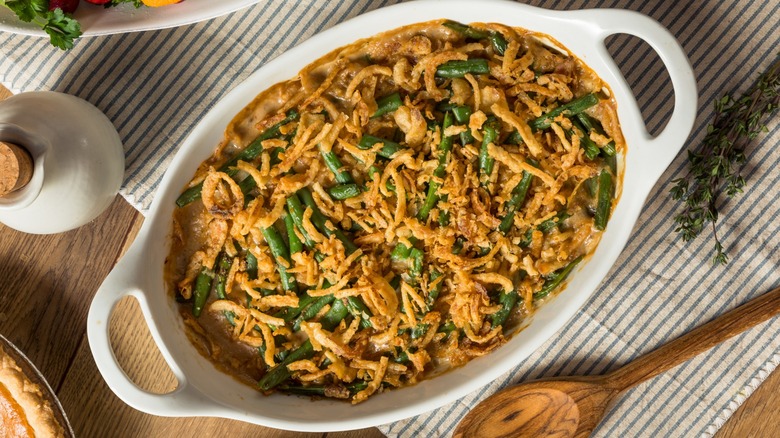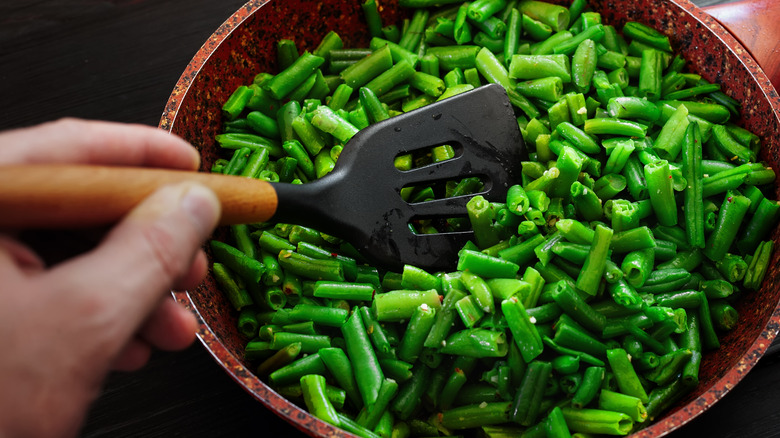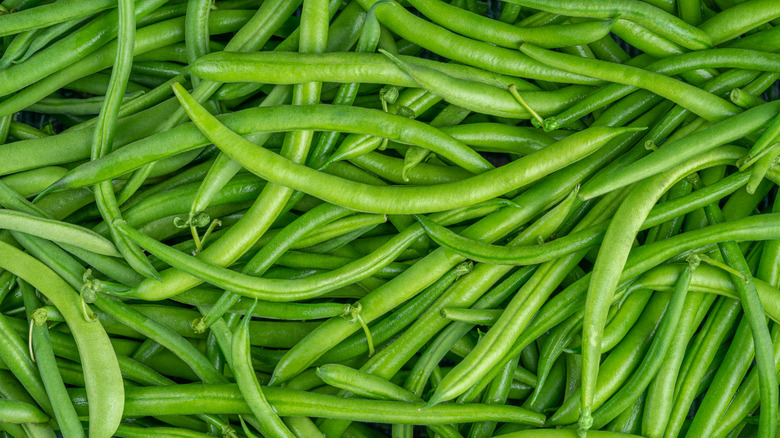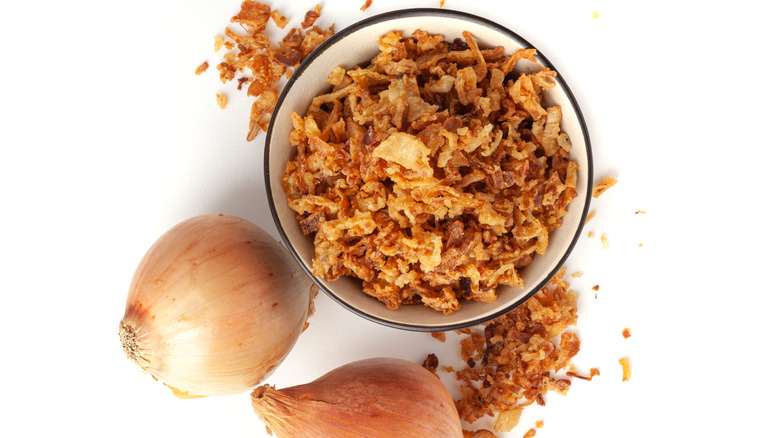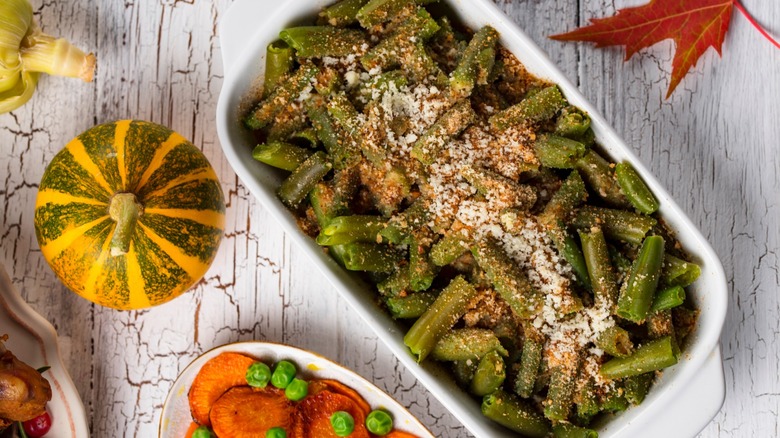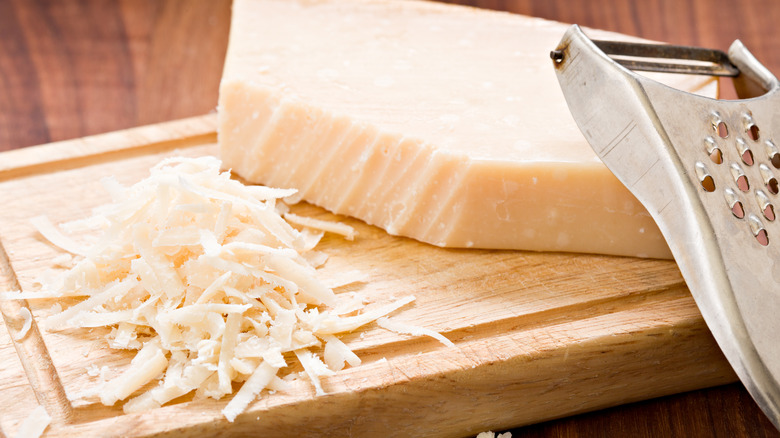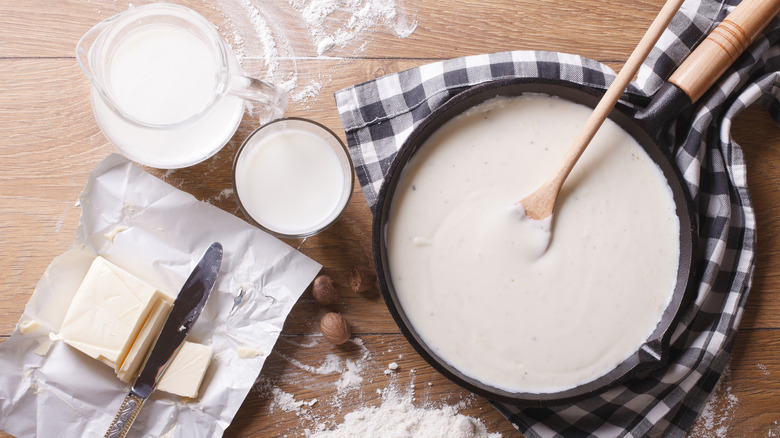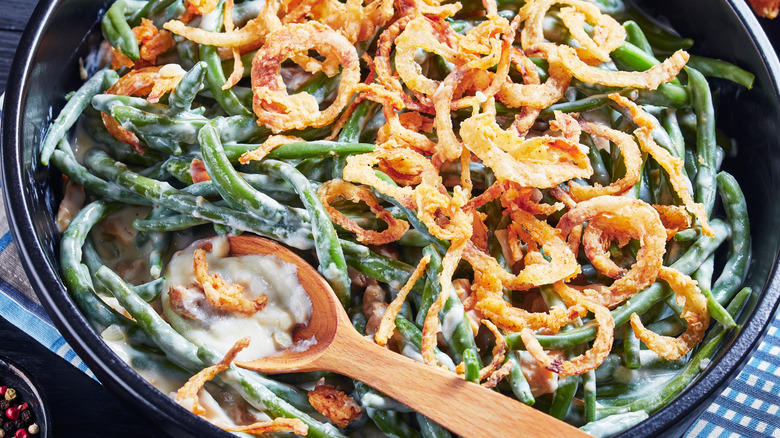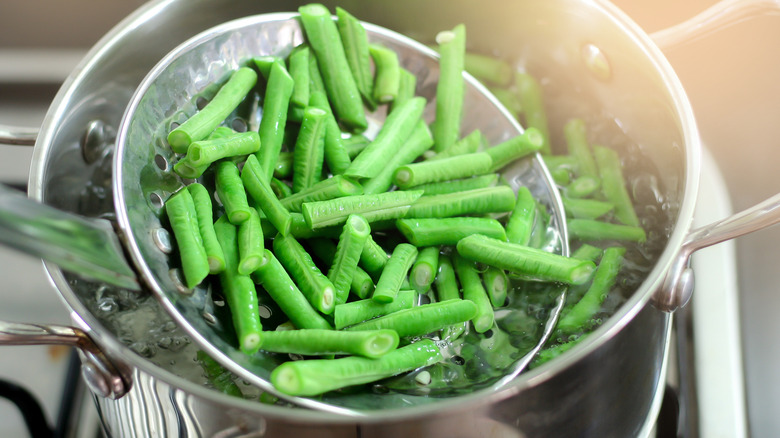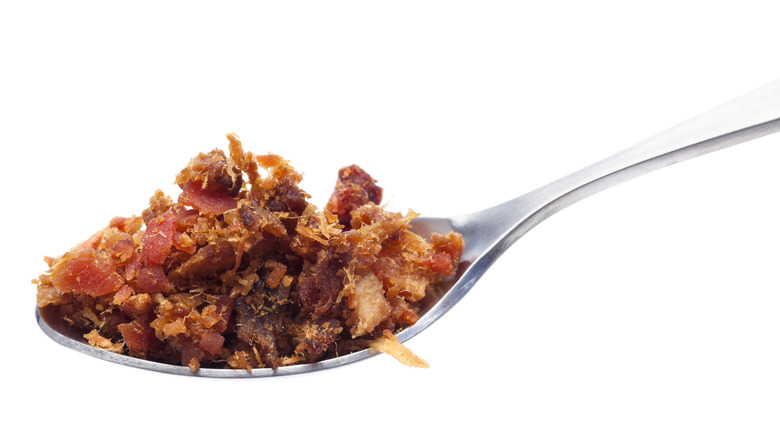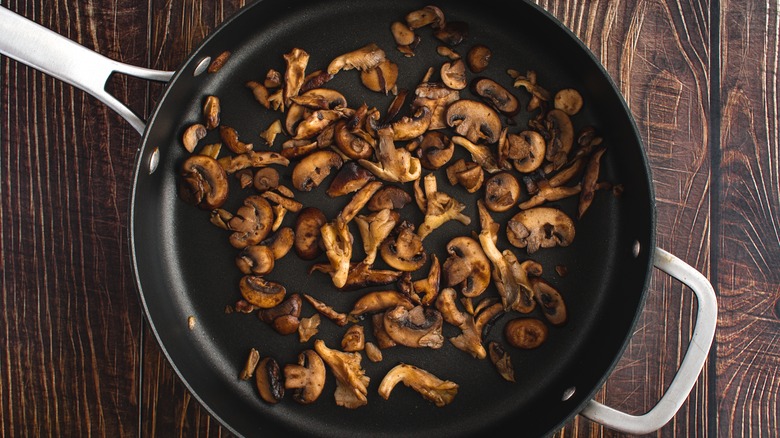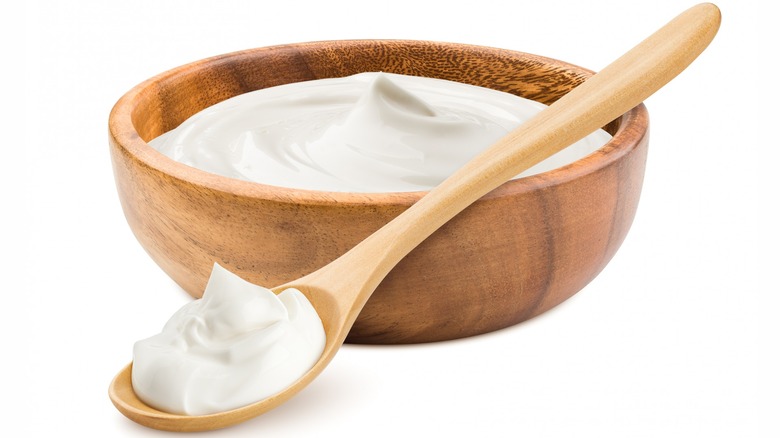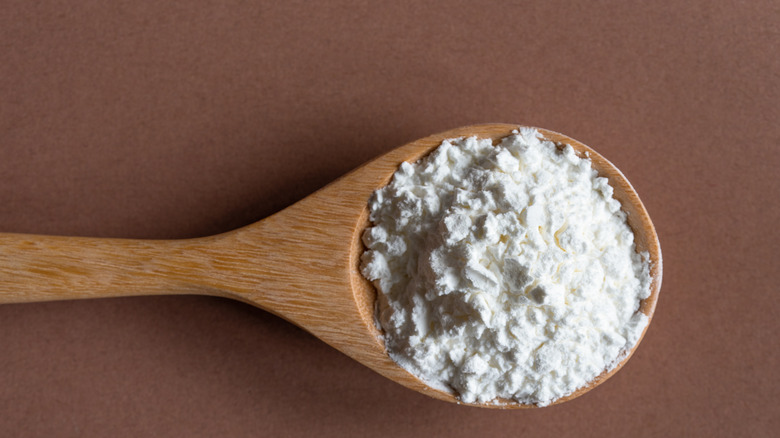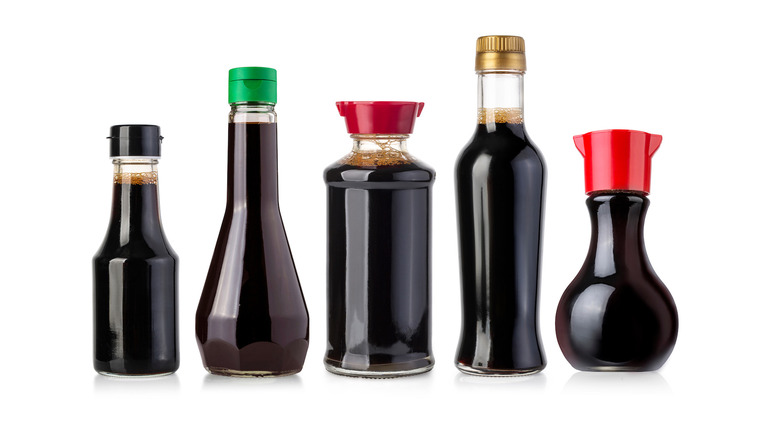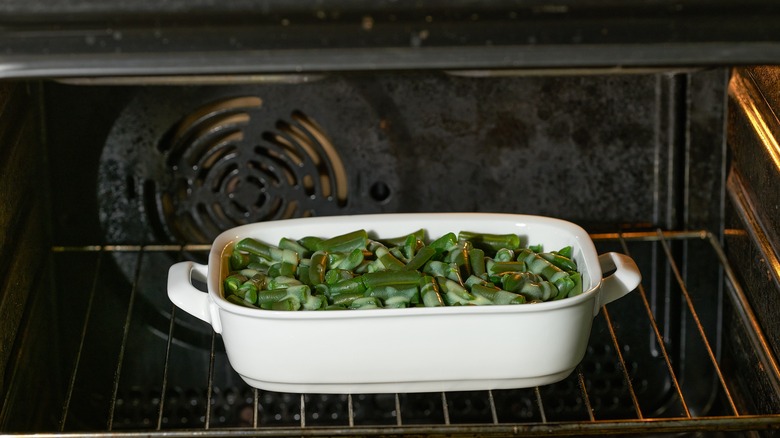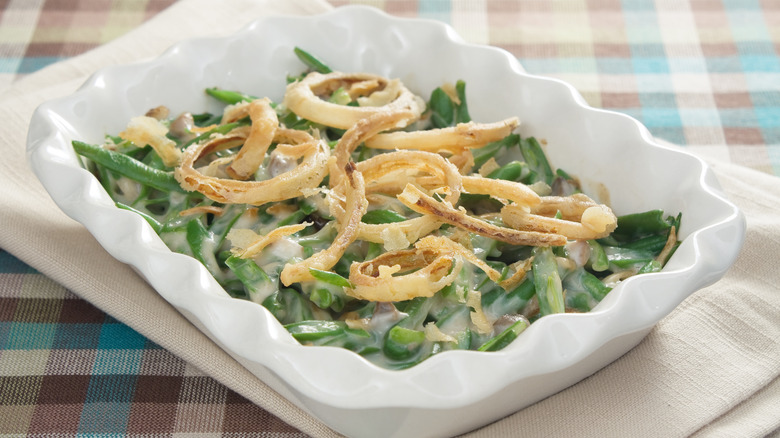15 Expert Tips For Making The Best Green Bean Casserole
The traditional green bean casserole was born in 1955. If you've ever made it, you likely know that the famous dish often includes Campbell's cream of mushroom soup, but did you know that this recipe was actually invented by a Campbell's employee? Dorcas Reilly, the inventor, combined French-style green beans, mushroom soup, celery salt, soy sauce, and French's fried onions for the original recipe. Of course, over the years, Americans have modified the recipe to fit their personal preferences and to upgrade it into a fancier, more elegant dish.
As a chef with experience working in many different types of establishments in the culinary industry, I've learned some of the best ways to make casseroles, especially the famous green bean casserole. Moreover, you can apply some classical French cooking techniques, such as making sauces with roux. Whether you're loyal to the traditional ingredients and don't want to stray too far from them, or you're on the lookout for exciting additions that you can add to your casserole, you've come to the right place.
1. Make the filling in advance
If you plan to make green bean casserole for Thanksgiving, it's a good idea to start prepping it the day before since the holidays can get pretty hectic with all the different dishes you need to make. Don't worry about the topping yet — that portion can wait until the day of. However, you can mix the green beans, soup, and other components you plan to use in the filling. Transfer them to the casserole dish you will bake it in and put it in the refrigerator.
If some components are still warm, wrap them, but leave a small opening to prevent moisture build-up, which you can return to later and close up. Overnight, make sure the dish is entirely covered with foil to ensure that all ingredients stay fresh and don't come in contact with any refrigerator foods or odors. The next day, you can preheat the oven, allow the casserole to come to room temperature, and then can get right to baking it.
2. Use fresh or frozen green beans instead of canned
When you use canned green beans in this classic Thanksgiving side dish, they can make the casserole turn out overly mushy. This is because manufacturers cook the green beans during the canning process, so when you bake them in the casserole, they become significantly overcooked. Also, many canned green beans are filled with preservatives or unnecessary amounts of sodium. With all this in mind, it's best to use fresh green beans for your casserole.
When you bite into a green bean casserole with fresh veggies, it has an incredibly tender yet firm bite, giving a more enjoyable texture. Fresh vegetables also taste better when you control how they're seasoned and they have a much brighter color than the dull canned ones. If you can't get ahold of fresh, another option is to use frozen green beans. However, this does take more work because you need to thaw them first, before you work with them. Drain the green beans when you thaw them, as they will contain more water, which can affect the finished casserole's consistency.
3. Make your own fried onions
There's no shame in using store-bought crispy fried onions as a topping for your casserole. They have an excellent taste, appetizing color, and delicious texture. Nevertheless, to impress your guests and take your green bean casserole up a notch, consider making homemade fried onions. It's more straightforward to make the topping homemade than you might think, and when you make it with fresh onions, it has a more complex flavor profile. There are a couple of ways you can do this.
The easiest way is to thinly slice your onion into rings, then dunk the rings into soy flour, or another type of flour you prefer. Working in batches, you can fry the onions in canola oil. Another option is to season the flour with ingredients like cayenne, smoked paprika, white pepper, chili powder, garlic powder, or salt. You can dip them in buttermilk first, which helps the flour stick. Either way, if you have a mandolin slicer, this is a perfect opportunity to put it to use. The onion slices shouldn't be too thick. Otherwise, you won't have green bean casserole with crispy onions, instead ending up with thicker and less crunchy onion pieces.
4. Experiment with different toppings
If you're not a fan of onions, plenty of other toppings for your side dish can complement the casserole filling. This dish benefits from a crispy topping since the soup is velvety and the green beans are soft. An easy swap is to use some type of breadcrumb topping. Panko breadcrumbs are famous for having an impressive level of crunchiness. However, you can also make your own by crushing Ritz crackers or stale bread.
To use Ritz crackers, throw them in a food processor to break them down, and mix them with melted butter. They will turn pleasantly crispy. You can use a similar method with bread. You just need to cube it before running it through the appliance. Feel free to add any seasonings, such as salt, oregano, thyme, and other dried herbs into the mix. Lastly, you can take inspiration from the classic green beans almondine dish and use toasted, slivered almonds as the topping. The nutty flavor of the almonds is an excellent match for the casserole!
5. Add a small amount of cheese
Cheese often finds its way into comfort foods, so it's no surprise that it tastes amazing in green bean casserole. The trick to including cheese in this side dish is to use the right amount. If you overdo it, the green beans and other classic components will be overpowered by the strong cheesy flavor, taking away the recognizable and nostalgic essence of the dish. However, when you use the right amount, it melts into the sauce beautifully.
The best options are shredded sharp cheddar, white cheddar, or parmesan cheese. When you combine all of the components, stir the cheese in last. You don't need more than ½ cup of shredded cheese for a three-quart casserole dish. Only ¼ cup is needed if you're using parmesan, since it has a bold flavor. Alternatively, you can keep the cheese separate from the filling to make a layered green bean casserole. Load the green bean mixture into the dish, top it with cheese, and then the other topping can go over the cheese.
6. Swap the canned soup for homemade
There's no denying that using soup out of a can makes the recipe incredibly easy. However, there are better ways to dress your green beans, which can also let you avoid the excessive amounts of sodium in canned soup (Campbell's has a whopping 2,150 milligrams of sodium per can). For instance, you can replicate the condensed cream of mushroom soup and make your own from scratch. That way, it preserves the casserole's comforting, familiar flavors but makes the mushroom flavor more pronounced. You'll need butter and flour for a roux, mushrooms, seasonings, stock, and milk or heavy cream.
Another option is to make a simple cream sauce for the green beans to reside in, which tastes just as lovely. A classic béchamel white sauce contains butter and flour for roux, milk, salt, and eggs, which you can build upon and include other components. Sometimes, it has a smidge of ground nutmeg, too. Béchamel is one of the French mother sauces that require only simple techniques, making it approachable for home cooks, and it tastes phenomenal with the green beans.
7. Cook it in a slow cooker or on the stovetop
If you make this casserole on a holiday, the odds are that you probably need your oven for other dishes too. Some things like roasting a Turkey obviously take priority, and this is when you should make green bean casserole on the stovetop. Essentially, you only need to make a homemade cream sauce in one pan and the green beans in another and then combine the two with other mix-ins that you want. When it comes to the topping, the best way is to separately toast your breadcrumbs or fried onions and add them on top when all the skillet components are ready.
When you make this dish in the slow cooker, you can use the same method with the topping. If you put crispy ingredients in the slow cooker, they just get soggy, so you don't want to do that. Nevertheless, one convenient thing about the slow cooker is that you can use the warming function when the food is done and serve it from there, keeping it nice and hot until the other holiday dishes are ready.
8. Par-cook fresh beans beforehand
If you've ever eaten an undercooked green bean, you might remember the squeaky sound and funky texture that comes along with it. It would be disappointing to try something new and skip the canned green beans, only to end up with an undesirable casserole. The only way to guarantee that this doesn't happen is to par-cook the vegetables beforehand. You can do this in various ways, but steaming or boiling them is the safest route.
If you roast or air fry them, they take on a nice flavor, but then you risk overcooking them (plus, boiling or steaming is quick). Whichever method you use, transfer them to an ice bath once they become tender. The ice water momentarily stops carryover cooking and helps preserve their crisp texture and vivid green color. And, of course, they continue cooking where they left off when you put the casserole into the oven.
9. Add bacon for flavor and texture
Bacon is a versatile ingredient, and lucky for you, it pairs excellently with every single component in green bean casserole. The green beans' grassy taste benefits from the bacon's meaty flavor. The crispy texture also counterbalances soft ingredients like the soup or sauce in the filling. Although this dish usually has a crunchy topping, there's nothing wrong with having another ingredient with some bite.
To use this addition, chop and cook the bacon separately first and drain any grease. If you work ahead, you can also use the grease to replace butter in the sauce, giving the dish a bacony undertone. You can also get picky with which bacon you use, depending on your preferences. To get maximum crunch, use thin bacon slices with high-fat content. For something chewier, use thicker slices with less fat (like center-cut) and cook them for slightly less time.
10. Include fresh sautéed mushrooms
Since traditional recipes require cream of mushroom soup, you can play off that to make a spruced-up green bean casserole and include fresh sautéed mushrooms in the filling. This trick is helpful if you go the homemade soup route, but especially if you get the soup out of a can because it can give it more of a home-cooked feel. The mushrooms provide a deep umami flavor and a meaty texture, making the casserole heartier. There are many varieties of mushrooms that you can use for this. Some mushroom types you can use include button, shiitake, cremini, or portobello, which all have an excellent mouthfeel when you sauté them.
Whichever kind you choose, clean any debris off them using damp paper towels or cloths. Slice them into bite-sized pieces before sautéing. Portobello mushrooms are often more expensive because they are larger and more mature, so if you want to go the less expensive route, you can purchase button mushrooms (which are the same species, just younger), and they will do just fine. However, if you want to find something down the middle, cremini or shiitake mushrooms typically have more flavor than button mushrooms and aren't as expensive as portobellos.
11. Add extra creamy ingredients
If you prefer your casserole to be extra saucy, consider adding more creamy ingredients than just soup or sauce. For instance, if you include sour cream or cream cheese, they supply the dish with a tangy undertone, adding a thick, velvety consistency. The sour cream softens if you mix it with other ingredients — it isn't too difficult to blend it in. On the other hand, you might need to soften cream cheese first to prevent lumps. Allow the cream cheese to come to room temperature, or throw it in the microwave until it's spreadable.
Be careful with the microwave because it tends to overheat — short increments of 10 seconds at a time are sufficient. Then, you can carefully fold it into the other casserole components. Lastly, other options like crème fraiche or Greek yogurt give a similar effect. With any of these options, you only need about ½ cup for a standard casserole dish unless you plan to make the entire sauce or soup with them as the base.
12. Don't forget a thickener
A common downfall that people often encounter with this dish is that it ends up being watery. Nobody wants to scoop into a runny green bean casserole, but rather one with a pleasantly thick sauce that covers the veggies. There could be several reasons why green bean casserole turns watery. It might be that you used frozen green beans and didn't drain them well enough or that you didn't reduce your sauce.
Additionally, if you add other elements, such as sour cream or mushrooms, it's a good idea to add more thickener than normal. Fortunately, how your sauce looks on the stovetop often indicates how the final product will turn out. The soup or sauce should already be thick before you put it in the oven, so if it seems watery, fix it before you bake it. To do so, make a slurry with water and cornstarch (or flour) and fully incorporate it. This will help it to thicken. If the casserole seems runny after baking, it might just need more oven time, and some time to rest after you remove it.
13. Add a dash of soy sauce or Worcestershire
Worcestershire sauce is the secret ingredient for an outstanding green bean casserole, and all you need is a dash to notice the transformation. Since Worcestershire has an impressive level of umami depth, it can highlight the best qualities in the green beans or mushrooms. This is especially true if you have to use canned veggies or soup because it instantly adds extra dimensions of flavor.
Worcestershire sauce gets its savory flavor from anchovies, so it isn't vegetarian-friendly, which is something to be aware of when you plan to serve it to many people. Another option to use in place of Worcestershire is soy sauce, which is typically entirely plant-based and has a mixture of umami and salty hints with some sweet undertones. Since it can be a bit salty depending on the brand, remember that a little goes a long way, and you don't want your entire casserole to taste like soy sauce.
14. Don't add the topping too early
The last thing you want to do is burn the surface of your casserole, so timing is everything when it comes to the topping. Ideally, if you plan to make the casserole using the traditional way, by baking it, don't add the breadcrumbs or fried onions for the entire cooking duration. If it's in the oven too long and browns prematurely, you might need to cover it, but that makes it worse because trapped steam can take away the crispiness.
For a fried onion topping, you can bake the filling first for all of the flavors to blend, then add the onions for the last 10 minutes of baking so they can turn golden brown. Alternatively, bread crumbs are trickier because it depends on whether you make them homemade or use pre-made crumbs. The easiest way is to cook the filling, add the bread crumbs, and then place it under the broiler to become perfectly crisp.
15. Season all of the components separately before combining them
Sometimes, casseroles can turn out bland, especially if you wait until after you combine the different components to season the filling. It can be hard to gauge how much seasoning you need. To prevent the casserole from being flavorless when you take it out of the oven, you can work on properly seasoning each component before you combine them. This suggestion applies whether you make the soup homemade or purchase it canned.
You can use ingredients like garlic powder, onion powder, oregano, and salt for the green beans so they taste delicious on their own. Then, once you combine all the filling ingredients, give it a taste and see if it needs more work. Odds are that it will taste fantastic when you use this method. Lastly, you can put seasonings in the breadcrumbs, fried onions, or other toppings you use to ensure there's impressive flavor in every part of your finished casserole.
